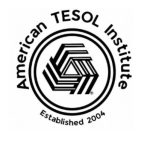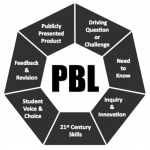Lights, camera, action! Incorporating videography into your TESOL classroom can transform language learning from a passive experience into a dynamic and engaging adventure. By empowering students to become filmmakers, you can unlock a wealth of opportunities to enhance their language skills and cultural understanding.
Why Videography?
- Boost Engagement: Videography injects excitement and creativity into language learning. Students become active participants, eager to express themselves and share their stories.
- Develop Authentic Communication: Creating videos requires students to use language in a real-world context, promoting authentic communication and collaboration.
- Enhance All Language Skills: Videography provides a platform for students to practice listening, speaking, reading, and writing in an integrated and meaningful way.
- Foster Cultural Awareness: Students can explore and express their own cultures and learn about others through video projects, promoting intercultural understanding.
- Build 21st-Century Skills: Videography encourages students to develop critical thinking, problem-solving, and digital literacy skills essential for success in the modern world.
Creative Videography Projects for TESOL:
- Short Films: Students can write, direct, and act in their own short films, practicing dialogue, narration, and storytelling.
- Documentaries: Encourage students to explore a topic of interest and create a documentary, conducting interviews, gathering information, and presenting their findings.
- News Reports: Students can create news reports on current events or school activities, practicing clear pronunciation and concise language.
- Music Videos: Students can create music videos for their favorite songs, focusing on lyrics, rhythm, and expression.
- Animated Stories: Using animation apps, students can bring stories to life, developing their narrative skills and vocabulary.
- “How-to” Videos: Students can create instructional videos on a variety of topics, practicing clear explanations and sequencing language.
- Cultural Vlogs: Encourage students to create vlogs about their cultural traditions, food, or celebrations, sharing their experiences and perspectives.
Tips for Success:
- Start Simple: Begin with short, manageable projects to build confidence and skills.
- Provide Clear Guidelines: Outline expectations for content, language use, and technical aspects.
- Offer Choice and Flexibility: Allow students to choose topics and formats that interest them.
- Encourage Collaboration: Promote teamwork and peer learning through group projects.
- Provide Feedback and Support: Offer constructive feedback throughout the process, focusing on both language and technical skills.
- Celebrate Creativity: Showcase student work and celebrate their achievements.
Tools and Resources:
- Smartphones/Tablets: Most students have access to devices with built-in cameras and basic editing capabilities.
- Free Video Editing Apps: Explore user-friendly apps like iMovie, Adobe Premiere Rush, or InShot.
- Online Resources: Utilize websites for inspiration and tutorials.
Action!
By embracing videography, you can transform your TESOL classroom into a vibrant hub of creativity and communication. Empower your students to become storytellers, filmmakers, and global citizens, using the power of video to unlock their language potential and express their unique voices.



